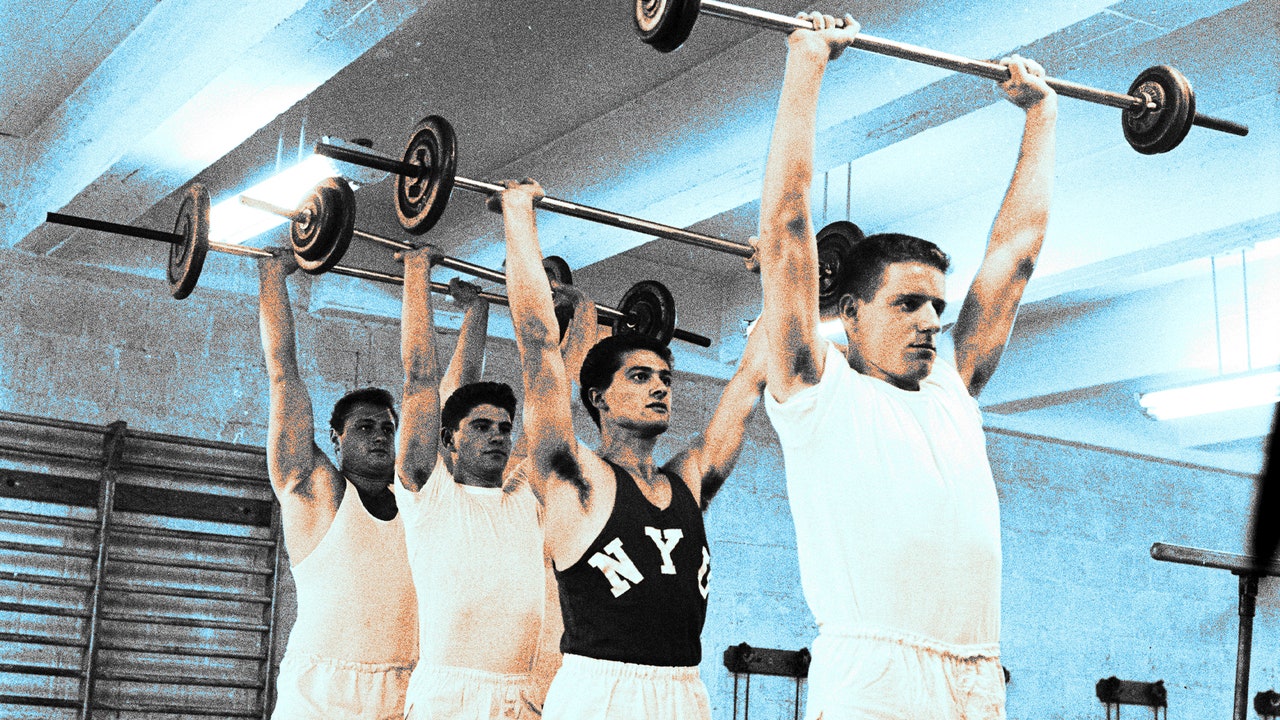Aside from targeting the major muscle groups, Holder recommends “prehab” exercises (those that can prevent injury before you need rehab) on overlooked areas like the ankles and shoulders. Mobility work—Holder has a 15-minute morning routine on YouTube—which ensures that your strength is functional, meaning that you can be strong and able to move optimally. (Picture the opposite of a bodybuilder struggling to complete a single rep of butt wipes.)
Mixing It Up
There are ways to progress with strength training that don’t involve bumping up the weight. Though the one-rep-max (the maximum amount of weight you can lift once, or 1RM) is often touted online as a benchmark, it “isn’t really applicable to everyday life,” Holder says.
If anything, focus on the three-to-five-rep-max (which should be around 85% of your 1RM), but also consider other factors, like building muscular endurance with higher reps and still being able to move well.
Aside from increasing the weight—which can increase the risk of injury, especially if form is compromised—there are other ways to add variance to your workouts. For example, if you’re doing push-ups, you can try performing reps where you lower yourself as slowly as possible, to spend more time working against your weight and gravity. You can also try to “explode” out of the bottom of a squat—mixing up the tempos to keep things interesting.
“If you want to apply simple things that you could do on your own,” Holder says, “think about it in three ways.” One is doing “a couple sets a day of an activity, [like] bodyweight, close to failure, or high reps.” Second is to get the body “used to moving slow and controlled through ranges of motion.” Third, whenever you find yourself with a spare 15 minutes or so, is to spend some time performing the key movement patterns. “It gets your body used to staying strong, without spending a lot of time in the gym and still being able to live your life,” he says.
Consider the Exercise Snack
Holder, the champion of the Exercise Snack, also demonstrates that you can get a decent dose of exercise even if all you have is some space in your apartment and 15 minutes. No matter your current level of fitness, a small dose of movement can build or maintain strength.
“The exercise snack mindset is ‘I don’t want to lose it.’ Especially if you’re already taking the time to build a level of strength, or you’re just trying to incrementally progress your way there,” Holder says. “You could have a weight lying around the house, and you pick five exercises you do a day for three sets, one to three sets of 12 reps each.”
You can also do bodyweight exercises to failure, or use a relatively light weight to perform reps until failure in a short amount of time, he says.
“If you want to apply simple things that you could do on your own,” he says, “think about it in three ways.” One is doing “a couple sets a day of an activity, [like] bodyweight, close to failure, or high reps.” The second is to get the body “used to moving slow and controlled through ranges of motion.” Third, whenever you find yourself with a spare 15 minutes or so, is to spend some time performing the key movement patterns. “It gets your body used to staying strong, without spending a lot of time in the gym, and still being able to live your life,” Holder says.
It’s Not About Vanity, It’s About Living Longer
Strength training is a completely different animal than bodybuilding. The former is about longevity. Muscles are longevity organs, Holder says, specifically endocrine organs that release different hormones crucial for healthy living. “It’s not always a vanity project,” he says. As we age, our muscle mass and strength decrease (a condition known as sarcopenia), in turn increasing our frailty and chance of death. The more strength you can add now, the more grateful you’ll be in the future.

